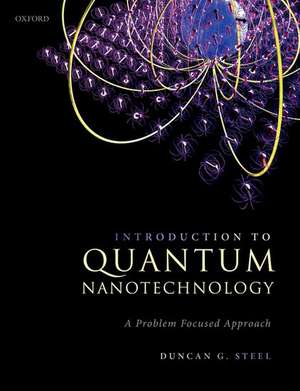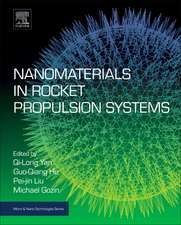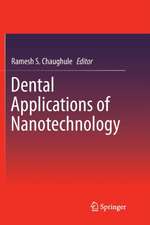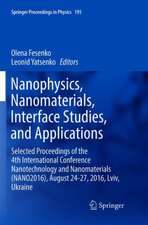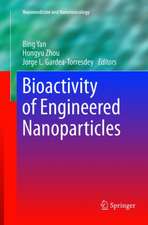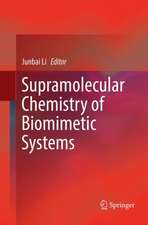Introduction to Quantum Nanotechnology: A Problem Focused Approach
Autor Duncan G. Steelen Limba Engleză Paperback – 30 apr 2021
| Toate formatele și edițiile | Preț | Express |
|---|---|---|
| Paperback (1) | 259.15 lei 31-37 zile | |
| OUP OXFORD – 30 apr 2021 | 259.15 lei 31-37 zile | |
| Hardback (1) | 495.16 lei 10-16 zile | |
| OUP OXFORD – 30 apr 2021 | 495.16 lei 10-16 zile |
Preț: 259.15 lei
Nou
Puncte Express: 389
Preț estimativ în valută:
49.59€ • 50.79$ • 41.25£
49.59€ • 50.79$ • 41.25£
Carte tipărită la comandă
Livrare economică 08-14 martie
Preluare comenzi: 021 569.72.76
Specificații
ISBN-13: 9780192895080
ISBN-10: 0192895087
Pagini: 390
Ilustrații: 52 line drawings and halftones
Dimensiuni: 191 x 247 x 21 mm
Greutate: 0.86 kg
Ediția:1
Editura: OUP OXFORD
Colecția OUP Oxford
Locul publicării:Oxford, United Kingdom
ISBN-10: 0192895087
Pagini: 390
Ilustrații: 52 line drawings and halftones
Dimensiuni: 191 x 247 x 21 mm
Greutate: 0.86 kg
Ediția:1
Editura: OUP OXFORD
Colecția OUP Oxford
Locul publicării:Oxford, United Kingdom
Recenzii
This book presents a combination of quantum physics and nanotechnology which is appealing and quite distinctive. The author has a huge amount of experience in presenting the material in the book to an undergraduate audience, and in working with the same range of ideas in a research context. The nature of the presentation of the material reflects this experience.
Duncan Steel has written an excellent textbook for intermediate engineering students, based on his experience in teaching classes in the area of quantum mechanics for engineers and in mentoring research students in the basic physics issues in quantum technology. His selection of topics is right on the mark. His consideration for the accessibility by the students is detailed, valuable and quite rare. The book has a lot of appeal.
Duncan Steel has written an excellent textbook for intermediate engineering students, based on his experience in teaching classes in the area of quantum mechanics for engineers and in mentoring research students in the basic physics issues in quantum technology. His selection of topics is right on the mark. His consideration for the accessibility by the students is detailed, valuable and quite rare. The book has a lot of appeal.
Notă biografică
Duncan G. Steel, The Robert J. Hiller Professor, Professor of Electrical Engineering and Computer Science, Professor of Physics, The University of Michigan - Ann Arbor. PhD in 1976 in Electrical and Nuclear Science, University of Michigan. Guggenheim Fellow (1999), APS Isakson Prize (2010), Elected Fellow of APS, OSA, and IEEE. 10 years at Hughes Research Laboratories (senior staff physicist), faculty at the University of Michigan (1985-), Area Chair for Optics and Director of the Optical Sciences Laboratory 1988-2007, Director of Biophysics 2007-2009.
